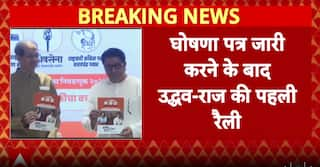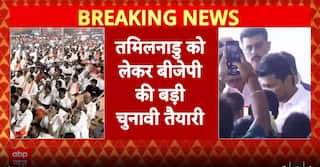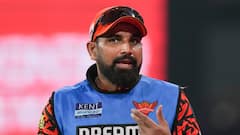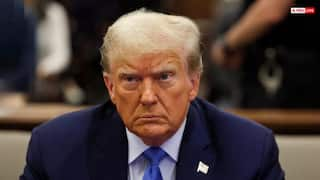Explorer
West Indian ODI team In The 90s Were A Competitive Unit Capable Of Beating The Best On Their Day
The 'Maroon Brigade' were a well knit unit which boasted of some world class stroke-makers in Brian Lara, Shivnarine Chanderpaul and Carl Hooper coupled with one of the best pace batteries in the world.

The West Indian team of the 1990s may have not been the all conquering unit of the 70s and 80s but still were very much a competitive unit who could give the best ODI teams a run for their money. During that period, Windies were predominantly led by a thinking cricketer in Richie Richardson, who was instinctive and dynamic in his leadership. The 'Maroon Brigade' were a well knit unit which boasted of some world class stroke-makers in Brian Lara, Shivnarine Chanderpaul and Carl Hooper coupled with one of the best pace batteries in the world. The Windies had a decent set of ODI openers in Sherwin Campbell and Stuart Williams who could provide the opening salvo up the order with some attacking stroke-play. The Windies openers had a typical Calypso swagger to their batting as they went about their batting with minimal footwork. The middle order looked well oiled and had loads of experience. The star attraction in their batting unit was Brian Lara , the wristy batting maestro, who could unleash a plethora of electrifying shots from his wide batting armory to torment the best of bowling attacks on his day. Lara's batting was spectacular with his sublime timing and lighting quick footwork. Shivnarine Chanderpaul was the workhorse of the team who mastered the art of grafting runs with a rather unorthodox technique of his own. Car Hooper was a free flowing batsman who tonked some huge sixes with effortless ease. Hooper was a handy player of spin and usually stepped up scoring rate with flurry of boundaries. Richie Richardson was an aggressive batsman who was a master at milking the singles Windies had a run grafter in Jimmy Adams down the order who could be resilient with his dodged defense and calm temperament. They had bits and pieces cricketers in Keith Arthurton and Phil Simmons who lent balance to their squad . While Arthurton could bowl some tidy spin, Simmons was quite the multi-utility cricketer who could bat anywhere in the order and bowl his military medium pace to great effect. The Windies pace attack was one of the most lethal of that era in ODI cricket courtesy the potent seam duo of Curtly Ambrose and Courtney Walsh. The giant like seamers bowled at brisk pace and extracted good bounce to create havoc among the best of batsmen. The support cast wasn't bad either with the tearaway seamers in Ian Bishop and the Benjamin Brothers. The Windies had depth in their pace battery with Cameron Cuffy and Reon King, who were pretty successful in the ODIs. They had a decent off-spinner in Roger Harper who was pretty handy with the willow too. Towards the later half of the decade, a bunch of talented cricketers came to the fore to carry forward the legacy of Windies cricket. While the batting had some promising strokemakers in Chris Gayle, Ramnaresh Sarwan, Wavell Hinds and Marlon Samuels, the emergence of seamers like Nixon McLean, Mervyn Dillon and Frankyln Rose had a calming influence on the team. The Windies had a decent run at the major ICC tournaments by making it to the semifinals of the 1996 World Cup and followed it up with a 'Super 6 ' appearance in the 1999 World Cup. The Windies also ended as the finalist in the inaugural edition of the ICC Champions Trophy in 1998.
Related Video
Breaking: PM Narendra Modi to Virtually Inaugurate 72nd National Volleyball Tournament in Kashi
Follow Sports News on ABP Live for more latest stories and trending topics. Watch breaking news and top headlines online on ABP News LIVE TV

Justin M Bharucha
Opinion
































